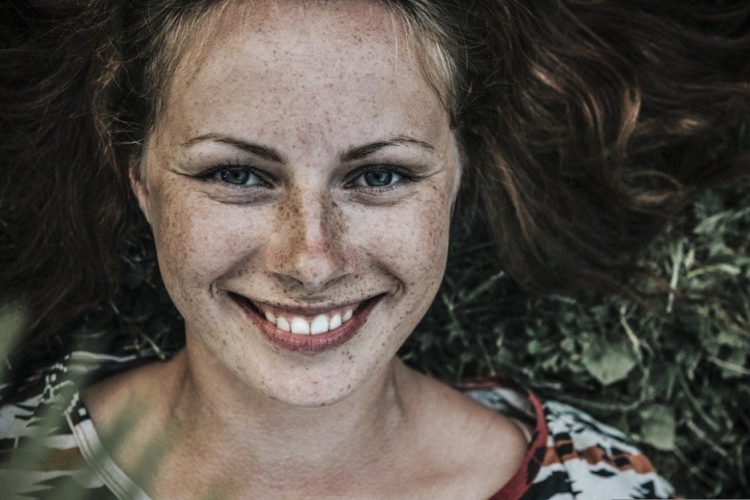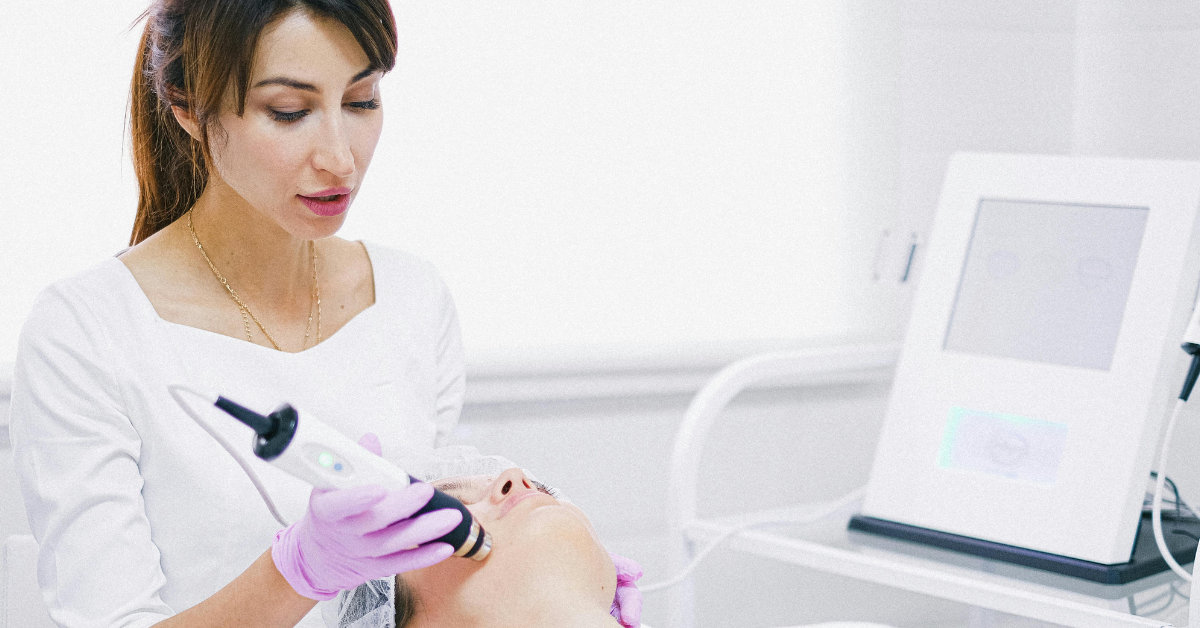Wrinkles, fine lines and creases are all part of the ageing process; it’s natural and to…

Melanin and Why It Causes Dark Spots On The Skin
There are an array of beautiful skin tones and skin colours seen throughout society. You only need to glance around a busy high street, and you will see light skin, dark skin and skin that is somewhere in between. This is all determined by phototypes, of which everyone is slightly different, and sun exposure. Your phototypes and how much exposure you get to the sun have a huge impact on how light or dark your skin is – and this is all down to melanin.
Melanin is the natural pigment that controls skin colour, and your body produces more when you are exposed to UV rays. So, when you spend a lot of time in the sun, your skin darkens. This is your body’s way of protecting the skin from the dangers of UV rays and leads to tanning in many people. When you produce a lot of melanin, your skin darkens. However, when too much melanin is produced in specific areas, dark spots can appear on the skin.
How Does Melanin Cause Dark Spots
Everyone produces melanin. If you have poor melanin function – for example, if your body produces too much melanin when the skin is exposed to the sun – you could start to experience hyperpigmentation, which is the appearance of dark spots on the skin. So, how does this happen?
When the skin is in the presence of sunlight, UV rays penetrate the top layer of the skin, known as the epidermis. This stimulates the skin’s pigmentation cells, which produce melanin. Melanin then darkens the skin to help protect it from the sun. However, some pigmentation cells are somewhat disrupted and instead, they produce a large amount of melanin at all times. When there is too much melanin, the skin struggles to distribute it evenly, and so excess melanin gathers in specific areas. Eventually, this leads to dark spots on the skin.
Is Everyone at Risk of Dark Spots on the Skin?
Everyone and anyone can develop dark spots on the skin. However, some people are more likely to develop hyperpigmentation than others. The risk of dark spots increases with age, as ageing cells are more likely to struggle to produce the correct amount of melanin. People who spend a lot of time outside are also at a greater risk of developing hyperpigmentation, as their exposure to UV rays is a lot higher. This is why dark spots are more commonly found in areas that are frequently exposed to the sun over a long period of time, such as the face and hands.
For the majority of people, dark spots and pigmentation are caused by the production of melanin. However, there are certain medications that can lead to similar results, such as some chemotherapy drugs. Changes to hormone levels during pregnancy can also impact melanin production in some women, which in turn increases the likelihood of dark spots occurring.
Can You Stop Yourself Developing Dark Spots?
Yes, there are actions you can take to reduce the chances of you developing unwanted dark spots on the skin. As it’s melanin that creates dark spots, the key is to prevent your skin from needing to produce melanin in the first place. This means avoiding direct sunlight as much as possible and protecting your skin from the sun when you do come into contact with UV rays. By protecting yourself from the sun, you can cut down on the amount of melanin being produced and prevent the appearance of dark spots. This can also stop existing dark spots from becoming more noticeable.
Avoiding the sun between the hours of 10am and 3pm, for example, can make a big difference as this is when UV rays are at their most dangerous. If you do spend time in the sun, make sure you wear a high SPF sunscreen. By avoiding sunlight and protecting yourself from the sun as much as possible, the body doesn’t sense the same urgency to produce melanin.
Can You Get Rid of Dark Spots Caused by Melanin Production?
Though dark spots on the skin tend to be completely harmless, they are often unwanted. They can impact a person’s self-esteem and confidence, and many people prefer the look of their skin without pigmentation differences. Luckily, dark spots can be removed using lasers.
When a laser comes into contact with a darker patch of skin, melanin absorbs the light and instantly converts it into heat. This causes the dark spot to break up and disperse, removing it from the skin and reducing the amount of visible pigmentation. By targeting the affected area with a laser, the pigmentation is destroyed without damaging the surrounding skin. This is possible because lasers are highly targeted, meaning very specific areas of the skin can be treated without any risk to other areas.
Though complex, lasers are an effective way of treating pigmentation differences on the skin. Not only can lasers be used to remove dark spots, but age spots, freckles and café-au-lait spots can also be treated in this way. Regardless of whether you have dark spots on your face, neck, hands or elsewhere on the body, specialist laser treatments can be used to remove them. There are a variety of different laser treatments available for hyperpigmentation, and the right one for you will depend on the size and depth of the dark spot in question.
Professional Laser Treatment for Dark Spots
When it comes to removing dark spots from the skin, laser treatment is by far one of the most effective options. This is why it’s such a popular route for those who are unhappy with the pigmentation of their skin. Instead of learning to live with dark spots, they can be removed by a professional. To find out more about removing dark spots using lasers, speak to a specialist.



